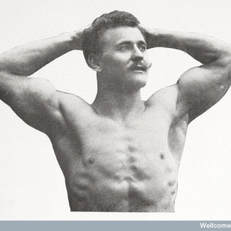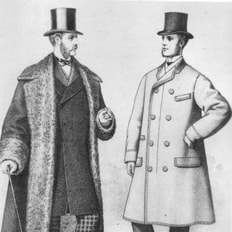|
Alexandra Gillgrass is currently in her fourth year at university studying history. She enjoy's writing about all aspects of history but sex and gender in particular have a special place in her heart. There is always something new and exciting to learn when exploring sex and gender and through her blog she hopes to give the most accurate as well as entertaining account of various weird and wonderful events throughout history. @gillyweed200 So, just to be clear I am going to be focussing primarily on the 1800s here. Most of you probably already know this but I won’t lie to you, I still get a tad confused with the centuries and the dates! The Victorian period was a time when gender roles were super prominent and anybody that didn’t fit neatly into the male or female category was considered a social outcast. The woman was the caregiver and housewife and was ultimately defined by her reproductive role which gave her her place in society as well as helping to define her character. Both the women and children were measured up to the man as he was considered the ‘norm’, the ‘perfect being’.
Masculinity for men starts relatively early when they’re boys. This is where men and women differ in their upbringing. Men gain ‘manliness’ by acquiring manly qualities as part of a long process which continues up until adulthood and beyond. Boys had to be prepared for a competitive and demanding areas as their masculinity would be tested by their peers not only during puberty, so in school (schools were already patriarchal institutions which excluded women and emphasised sociability between males) but also into adulthood. It could be argued that men felt a real sense of pressure as they had to ‘prove themselves’ and their masculinity in a sense. Girls on the other hand were expected to become women under their mother held in a domestic setting, following their mother’s footsteps. Qualities such as self control, hard work and independence were considered very important during the 1800s and were an encapsulation of not only Victorian moral values but also victorian manliness which was an elite cultural form. A man’s behaviour was crucial as it determined a man’s class credentials, peers and subordinates and so was a reflection of his character. Being the male breadwinner was held in high regard as he was providing for his family. If for example, a man lost his job and became unemployed he would then have to rely on his wife’s earnings and in turn, would lose his purpose. This creates a real complex where sense of self and sense of identity really is steeped in social influences for the man especially. This is why, when women began to appear in the workplace more regularly, it caused a strain. Not only was there less work for men available, it also meant the loss of men’s masculinity as the primary breadwinner . I think it’s also important to consider class when looking at this as well. For men who were middle class their domestic life and homosocial world were pretty balanced. But, for the urban working classes the husband was often made to feel out of place and was excluded from emotional aspects of the family. As a boy he would have developed domestic and nurturing skills as a result of being brought up by his mother. The mother, however, would have also included the teachings of manliness so that manliness would have been filtered down through a feminine figure creating a complex situation. In this respect it could be argued that the young boy would have felt pressure to ‘man up’ as it were from both his father and more surprisingly, his mother, despite being seen as morally superior to man. Other subcultures of masculinity include homosexuality and the unmarried youth. In many ways, homosexuality was a patriarchal scapegoat. ‘Gay life’ was incredibly widespread but was ultimately out of sight. With this in mind, homosexuality succeeded in striking at the roots of a family foundation, one of the reasons it was considered a threat. It also flouted the work ethic and subverted the camaraderie of all men association. This meant that homosexuality could have potentially changed the dynamics of the way masculinity was viewed, posing a threat to society and those who inhabited it. The unmarried youth were also constantly condemned because like the homosexuals, they were a threat to patriarchal order OR were considered a degenerate who threatened the manly vigour of future generations. I would love to know your thoughts on this! Thanks for reading!
0 Comments
Leave a Reply. |
Sex History ContentsIf you would like to submit an article, please fill out a submission on the Contact page Archives
September 2020
|


 RSS Feed
RSS Feed